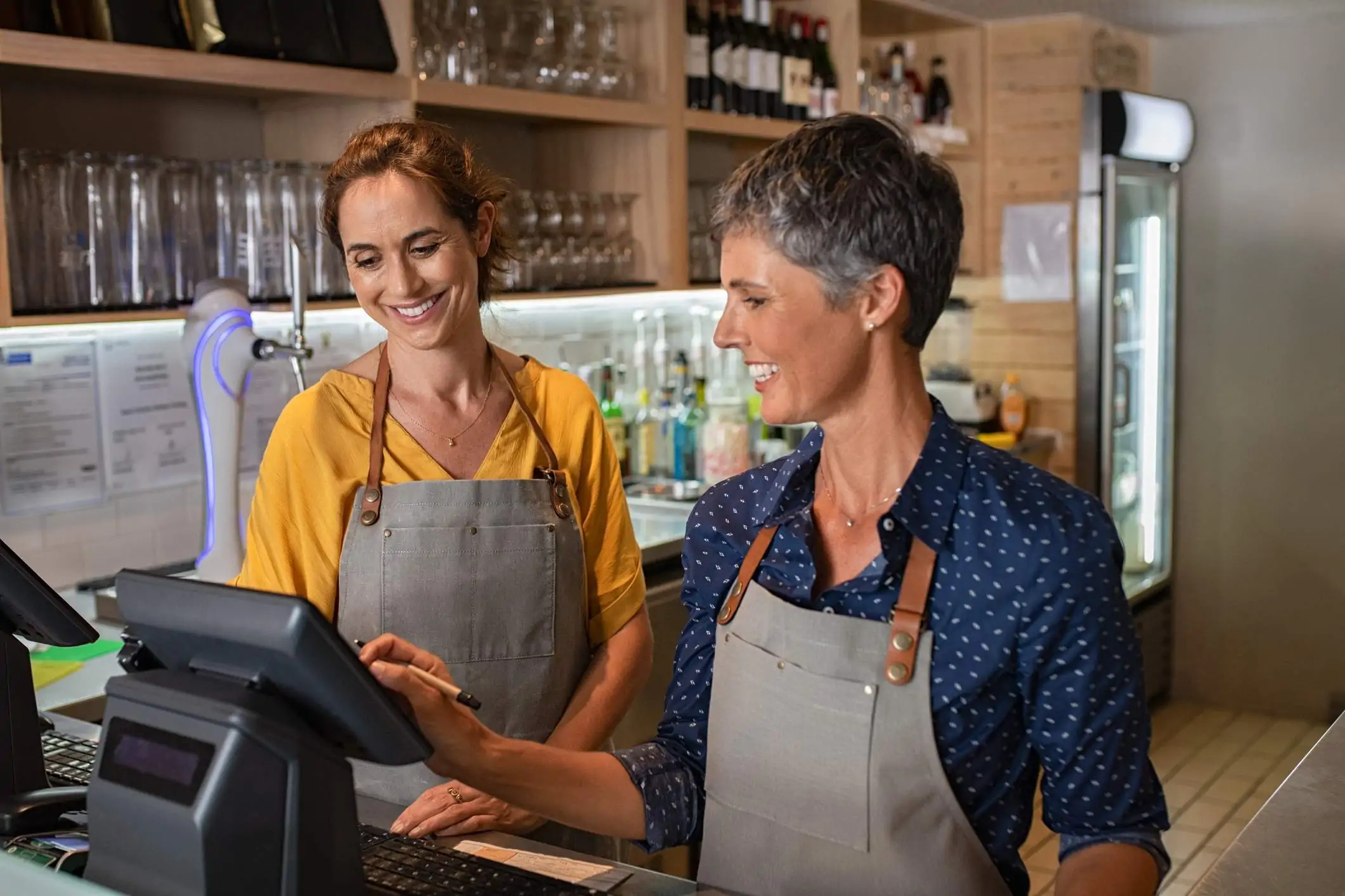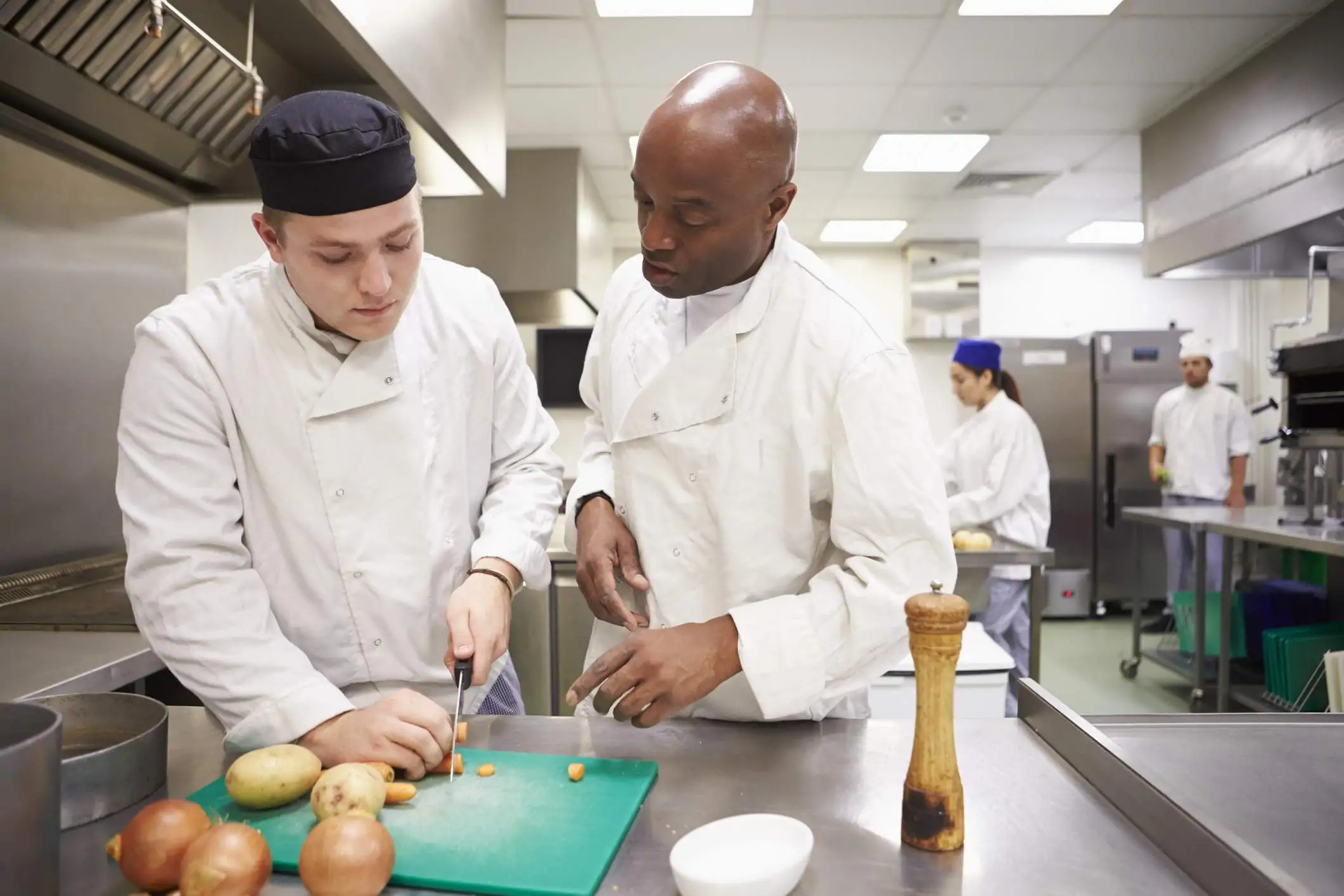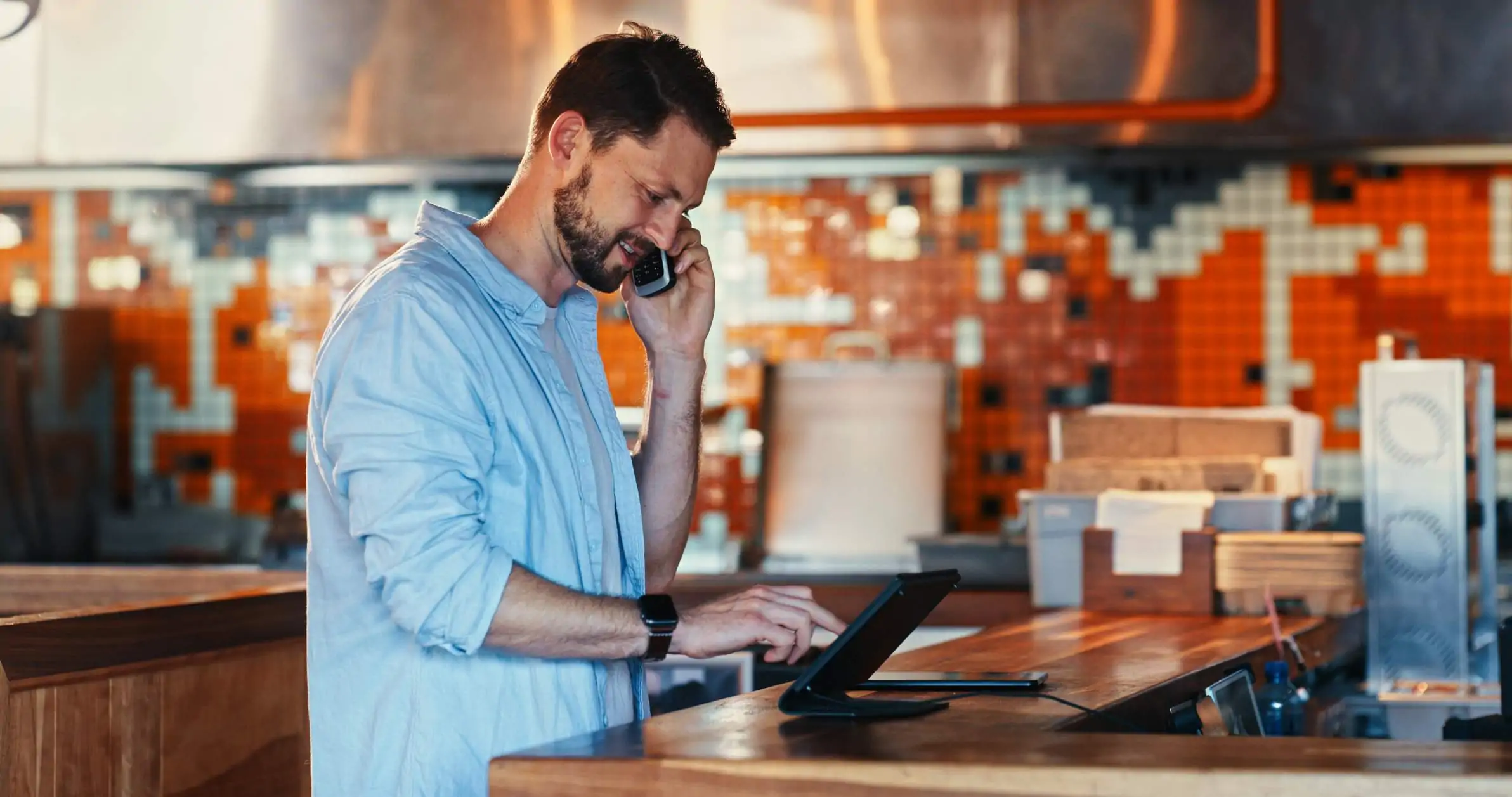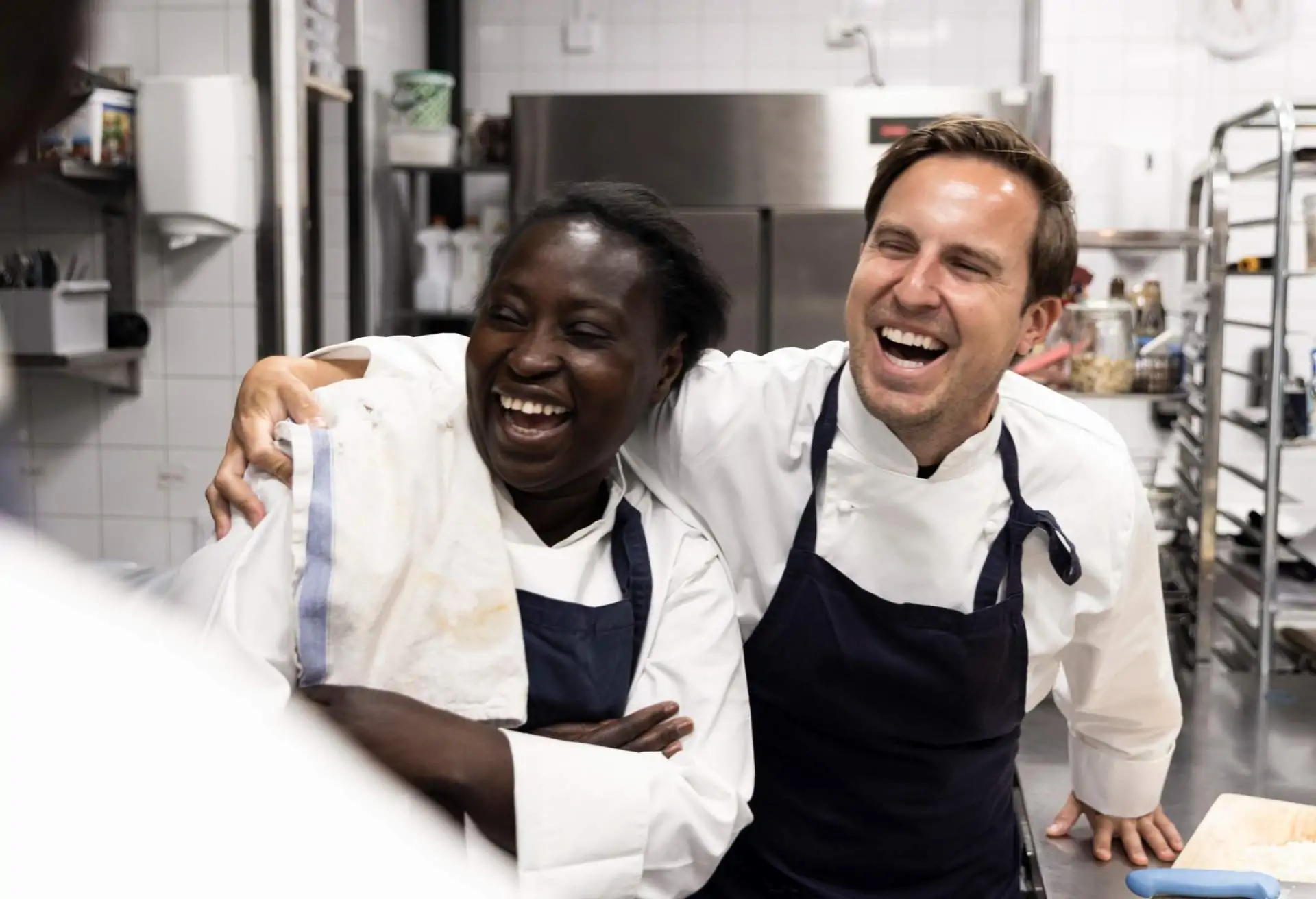Restaurant training is one of the most important things an owner can put into place. Well-trained teams mean shifts run smoothly and guests are happy with service.
When all team members fully understand how to execute their roles and responsibilities at the restaurant, they are more confident and engaged on the job. And they stay in the job longer. With ongoing training, you improve your chances of talented employees growing professionally as the restaurant or restaurant group grows. Simply put, top notch restaurant training fuels success.
Still, many restaurants don’t have formal training plans in place, to their detriment. Here’s what owners and managers need to know about restaurant training today and how it benefits the business:
Quick links
What is restaurant training?
What is a restaurant training program?
How is restaurant training delivered?
Types of restaurant training
What is restaurant training?
Restaurant staff training is how a new restaurant employee learns their new job. In many restaurants, this process is very informal. The majority of new hires have worked in the restaurant industry before and likely in the same role. Most come to the team with a strong working knowledge of what they’ll be doing each shift.
Still, every restaurant has its own way of doing things. Many times these operational differences are picked up quickly by a newcomer. In a lot of restaurants, training is a hodgepodge of ad hoc instruction, assumptions, observations, and past experience. This can work, but it isn’t the only way to get new people up to speed.

What is a restaurant training program?
A restaurant training program is a step by step way of learning about the restaurant and employees’ roles. This program standardizes training so each new employee gets the same level of information, instruction, and help.
Of course, what is taught will vary according to the role. Bussers need to learn different tasks than hosts and line cooks, after all. But a formal program ensures everyone goes through a similar process and has an equal opportunity to succeed in their new job.
How is restaurant training delivered?
Restaurant training varies greatly from one place to another. Here are some of the most common ways industry skills are taught today:
One-on-one training
If you own a small restaurant where people are hired one at a time, one-on-one training will probably make the most sense. In these cases, the new hire is paired with you, a manager, or a senior team member to teach them the ins and outs of the job.
Often a period of shadowing is required. Shadowing involves the newbie observing the more senior person doing their job from start to finish over one or more shifts, asking questions, assisting, and learning.
The benefits of one-on-one training include a close relationship that can form between the new hire and their trainer, the ability to ask specific and personal questions, and close supervision throughout the training process.

Group training
If your restaurant is a large chain or restaurant group, you are likely bringing on multiple new employees at the same time. This situation lends itself to group training. During a group training session, all new hires come together to learn the ropes in a systematic way from a senior person in the organization or even an outside job trainer.
With group training, the whole group benefits from each member’s questions, learns about different aspects of the restaurant, and gets exposure to the company culture in a big way right at the start of the job.
Online training
Only 19% of restaurants offer online training for new team members. However, online training is a growing trend. Gen Z and Millennials both prefer to learn this way. But few people can learn by pixels alone. Typically, a digital training course includes real-life, hands-on instruction as well, even if the bulk of learning happens online.
Formal digital restaurant training platforms can be cost-prohibitive. Usually only well-resourced large restaurant groups and chains can take advantage of it.
However, there are low-cost ways to incorporate digital learning into your training program.
- Film educational videos that demonstrate skills like how to operate the POS, how to greet guests, proper knife skills, and how to prep lemons for the bar.
- Create a YouTube playlist of these training videos for new employees.
- Ask your team if they have any favorite online video tutorials that teach a desired skill, such as how to mix a cocktail or create latte art, and start a collection of links.
- Make videos that describe and highlight the company culture you want to create.
- Have seasoned employees role play work situations, such as fielding tough questions from guests about the menu, and make a video to share.

Types of restaurant training
When people think of employee training, they usually picture new hires learning and practicing the skills they need to do their job. And that is a key piece of the training puzzle. However, there are many types of training to consider when running a restaurant.
Basic training
Every employee, regardless of their role, needs to receive the same core training especially when it comes to establishing a positive company culture. It’s important to standardize this through a training plan.
Write it down, and share it with those on your staff who will participate in training new hires. To streamline the process, make sure you have considered including the following:
- An orientation that each new hire will experience that shares the restaurant’s high-level mission and history
- An employee handbook
- Menu training for every new employee regardless of role. Knowledge of the menu is essential across the board
- An overview of scheduling policies and any other crucial policies such as those that cover substance use, diversity, and ethics

Front of house training
The front of house team includes hosts, servers, bartenders, bussers, and more. Anyone who works in the dining room interacting with guests is a front of house team member.
Here are some of the most important things to include in your front of house training:
- Customer service training. Guest happiness is at the heart of the hospitality industry, so it’s surprising that up to 70% of restaurant workers never get customer service training. Include a unit on this important topic so every front of house team member understands your expectations.
- Sales training. Servers in particular are salespeople. Give them the tools they need to drive up check averages while helping guests at the same time.
- Communication training. It’s helpful to train the team not only on how you expect them to talk to guests, but also on how you expect them to talk to each other. Consider introducing the concept of nonviolent communication.
Back of house training
The back of house team includes the entire kitchen staff. Many of these roles involve special skills that require training.
Here are some trainings that back of house employees may need, in addition to learning how to cook the relevant menu items:
- Knife safety and first aid. The vast majority of cooks will come with polished knife skills, but refreshers are always helpful. Likewise, first aid training ensures people know how to safely handle the inevitable kitchen accidents.
- Food safety and hygiene training. This training is important for new hires, but periodic refreshers will benefit all employees.
- Communication. It’s true back of the house employees will not interact much with guests, but they do need to know how to communicate effectively with the whole team.

Technology training
Most restaurants today have a tech stack, a collection of digital tools that help keep the restaurant running smoothly. This may include POS (point of sale) systems, reservations systems, table management software, employee scheduling systems, loyalty programs, and more.
The team members who use these tools must keep their skills up to date through regular training. Sometimes a tech vendor will send someone to the restaurant to help teach their platforms to your team. But even in the absence of that, it’s important that you make sure everyone has the skills they need to use the technology you rely on.
Cross-training
Particularly in these times of staff shortages, it makes sense to cross-train the team so they can fill multiple roles. Back bars can double as bussers, hosts can learn to be servers, and a bartender could be a budding sommelier.
Cross-training helps the team continue learning, and it can help a restaurant do more with fewer people on hand. Larger restaurant chains have been doing this for years, and it can benefit smaller restaurants as well.
Diversity, equality, and inclusion (DEI) training
DEI training helps a workplace become more diverse, equitable, and inclusive. It can help team members understand complex issues like unconscious bias that can impact how the team works together and interacts with guests.
Ideally, trainees walk away with concrete steps to make the workplace a spacer space for all. All too often, DEI training is something that happens once. Consider holding a series of DEI sessions that build on each other for maximum impact.
Career development
Training shouldn’t stop when people are no longer new on the job. In order to keep talented team members long term, you need to offer them opportunities to grow through career development, which involves training.
Now that you have a sense of what restaurant training can encompass, you can begin to create a training program from the ground up or add value to what you already offer.



